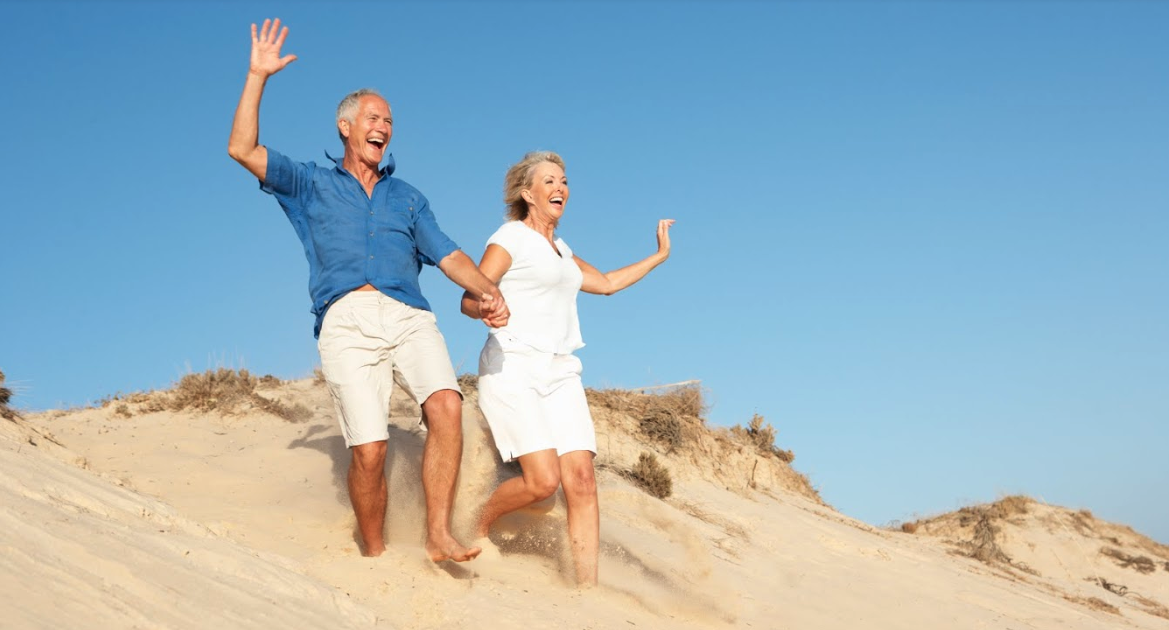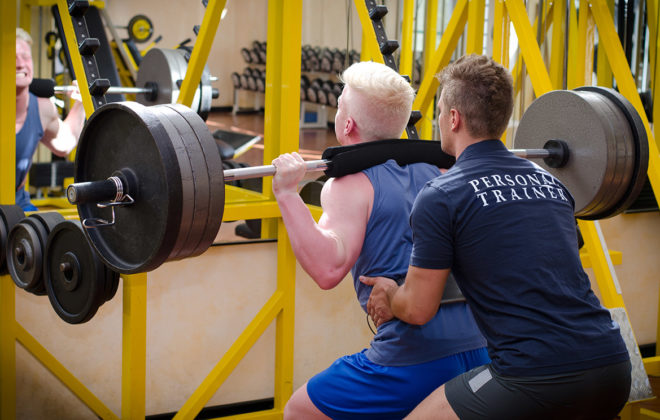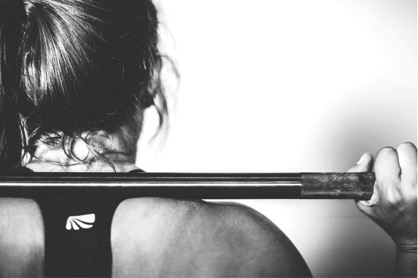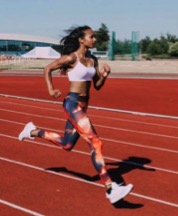V02max can be improved in 100 year old – Proven!
The story that has put a huge smile 😊 on my face, and I believe it will do the same to yours!
In 2000 the number of people older than 65 years was 6.9%. Projections say that up to 2050 that number will increase to 19.3%. Thanks to better living conditions people over 80 years are the fastest growing part of population. (1)
In December 2017., the Journal of Applied Physiology published valuable Research (2) on predictions of how the human body will age in the near future! The study, conducted by Veronique Billat et al. in France, proved that the maximum oxygen consumption can be increased (+ 13%) between 101 and 103 years after 2 years of training! Also – that same person aged 103 years was able to cover 26.9 km in an hour bike ride!
The authors state that this is the 1st study conducted on the person of that age.
For a better understanding of the blog, a couple of basic information.
- CASE STUDY refers to a detailed report for one participant who, because of their characteristics (e.g. a top athlete or a member of a specific group), can serve as a representative sample of some population.
- Cardiovascular endurance is defined as the ability of person to repeat movements that involve large muscle groups and which are moderate to high intensity over a longer time period.
- VO2max is defined as the maximum amount of oxygen the organism can spend in one minute in intensive physical activity.
- The maximum consumption of oxygen (VO2max) is expressed in absolute (liters of oxygen per minute – l O2 min-1) or relative values (milliliters of oxygen by a kilogram of body weight – ml O2 / kg*min-1). The maximum oxygen consumption depends on the ability of the cardiac and respiratory system to deliver atmospheric oxygen to muscle cells and the ability of the working musculature to use oxygen in the process of oxidative decomposition of nutrients
BENEFITS OF IMPROVING CARDIOVASCULAR ENDURANCE
- Reduction of risk of early death from heart disease and type 2 diabetes
- Reduction in high blood pressure
- Lowering the fat-tissue percentage
- Improvement of glucose and insulin sensitivity tolerance
- Reduction of anxiety and depression
- Reducing the risk of falls and fractures
- Recommendations for physical activity in elderly population
Recommendations for improvement of muscle and cardio-respiratory condition, bone health and functionalities, decrease in risk of KNB, depression and diabetes and cognitive impairment are:
- Elderly people should accumulate at least 150 minutes of aerobic physical activity of moderate intensity or at least 75 minutes of high intensity aerobic activity or the equivalent of moderate and intensive physical activity throughout the week.
- Aerobic activity should take place within a period of at least 10 minutes.
- For additional health benefits, older adults need to increase moderately intensive aerobic activities up to 300 minutes a week or include 150 minutes of highly intensive aerobic activity or equivalent combination of moderate and highly intensive activity.
- Elderly adults, with reduced mobility, should increase cardiovascular fitness by doing activities that improve balance and prevent crashes through 3 days or more per week.
- Muscle strengthening activities should be conducted with major muscle groups 2 or more days a week.
- When elderly people cannot fulfil the recommended amount of physical activity due to health conditions, they should be physically active as far as their abilities allow it.
V02max in average decreases by 5-15% and maximum heart rate for 6 – 10 beats per minute every decade starting from the age of 25-30.
In this study, Mr. Robert Marchand born at 26.11.1911. was a tested athlete.
Robert Marchand as a centenarian has higher aerobic fitness than most sedentary 50 years old! He is the world record holder in two categories in number of miles ridden in 1 hour: first category is for people above 100 and second above 105 years of age.
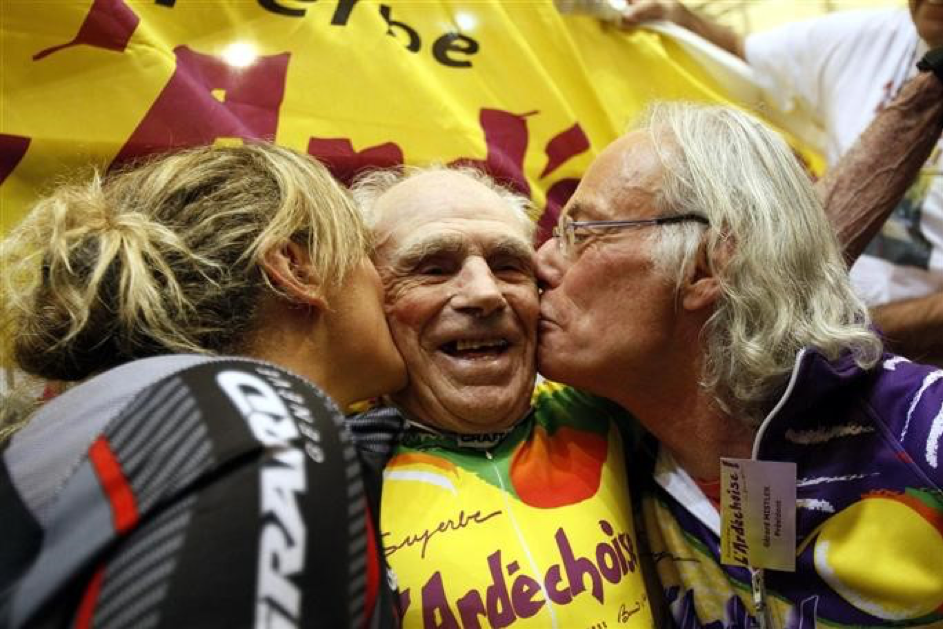
Billat has conducted initial testing and prescribed a program in which Robert spent 2 years training in average 5000km/year. Trainings included easy cycling 80% of the time (rate of perceived exertion was equal or less than 12), and 20% of time in high intensity zone with rate of perceived exertion equal or higher than 15 (on this Borg scale score 20 represents the hardest possible effort). Cadence averaged between 50 and 70 revolutions per minute during low intensity efforts and 70-90 in high intensity efforts.
Robert trained in average 2-3 times per week without using heart rate monitor. (2)
Maximum oxygen consumption (VO2max) increased from 31 to 35 ml · KG-1 · Min-1. (+ 13%)! The authors concluded that the increased relative consumption of oxygen occurred due to a combination of 2 factors: decreased fatty mass and increased absolute oxygen consumption.
Robert has stated that he does not use medication, that he has a rich social life (a very important item in longevity) and that he is watching over his nutrition.
He mentioned that until the 25th rode the bike, he had not practiced regularly during most of his work life, but that during his career he worked as a truck driver, gardener, firefighter and woodcutter. Since retiring, he started cycling most days of the week, either on a closed roads or on roads near his home in the outskirts of Paris. To end, he said he was disappointed and that he believed he could improve the result.
(At the beginning of this year, at the age of 106 years, he said he stopped practicing sports and went into recreational activities. More about the hero of this story you can find in this short video:
https://www.youtube.com/watch?v=Ey48j6dDNEo&t=46s.
Conclusion
Physical activity and physical exercise have proven to prolong the life expectancy. It is very important that persons are involved in some form of physical activity regardless of age. Cardio Fitness is a very important and often neglected component in recreational training. Be physically active, thinking long term and remember that you can thrive in every age!


